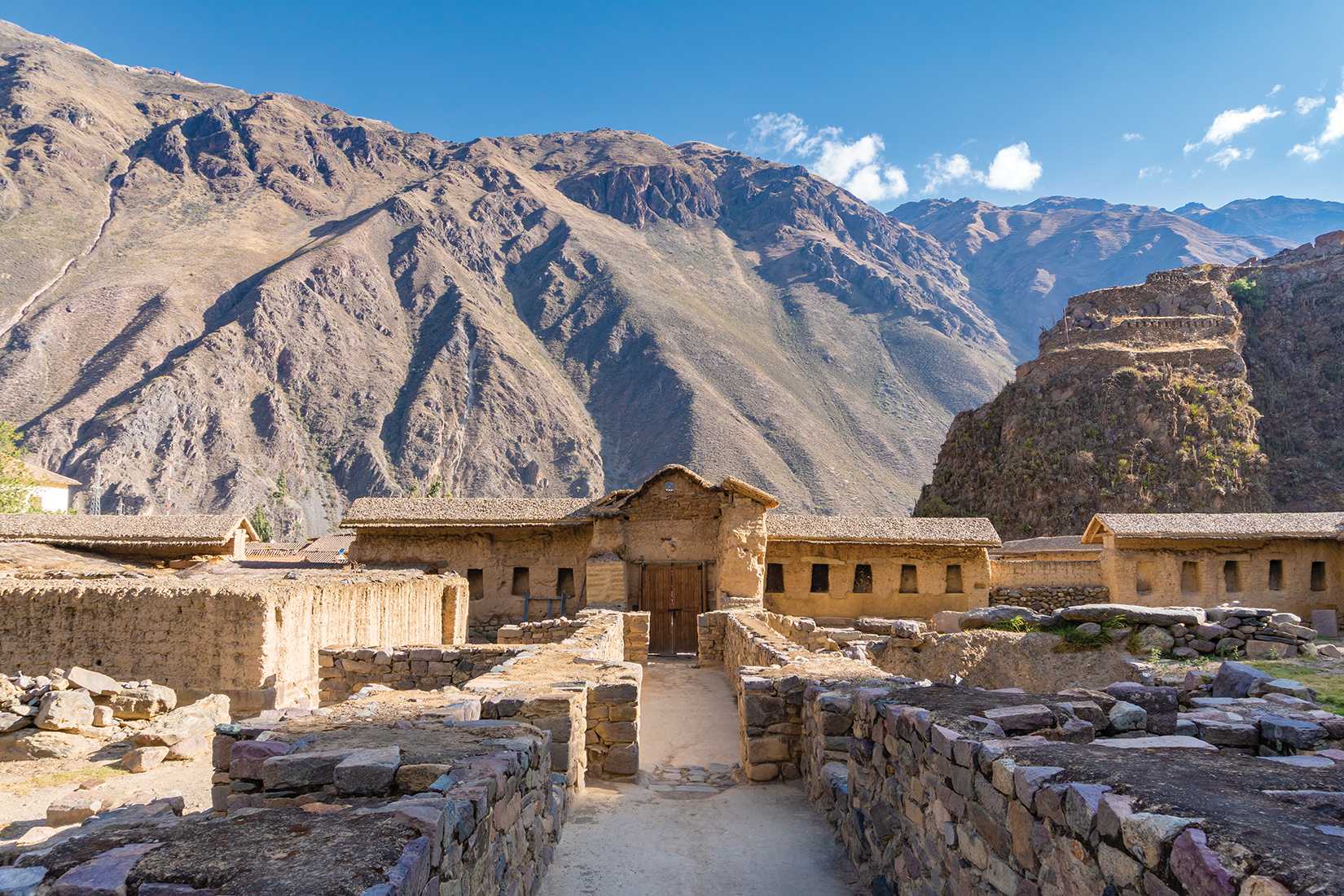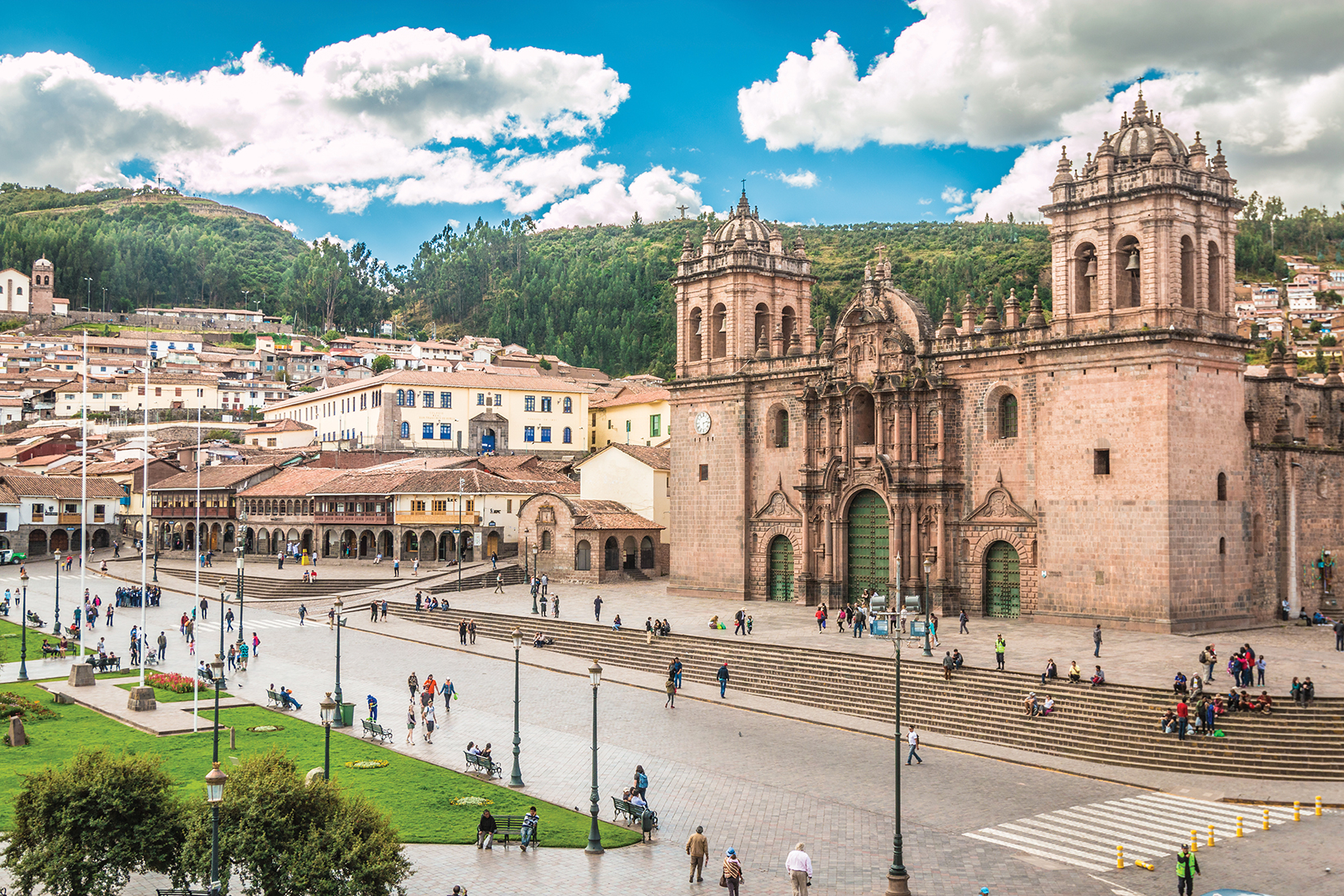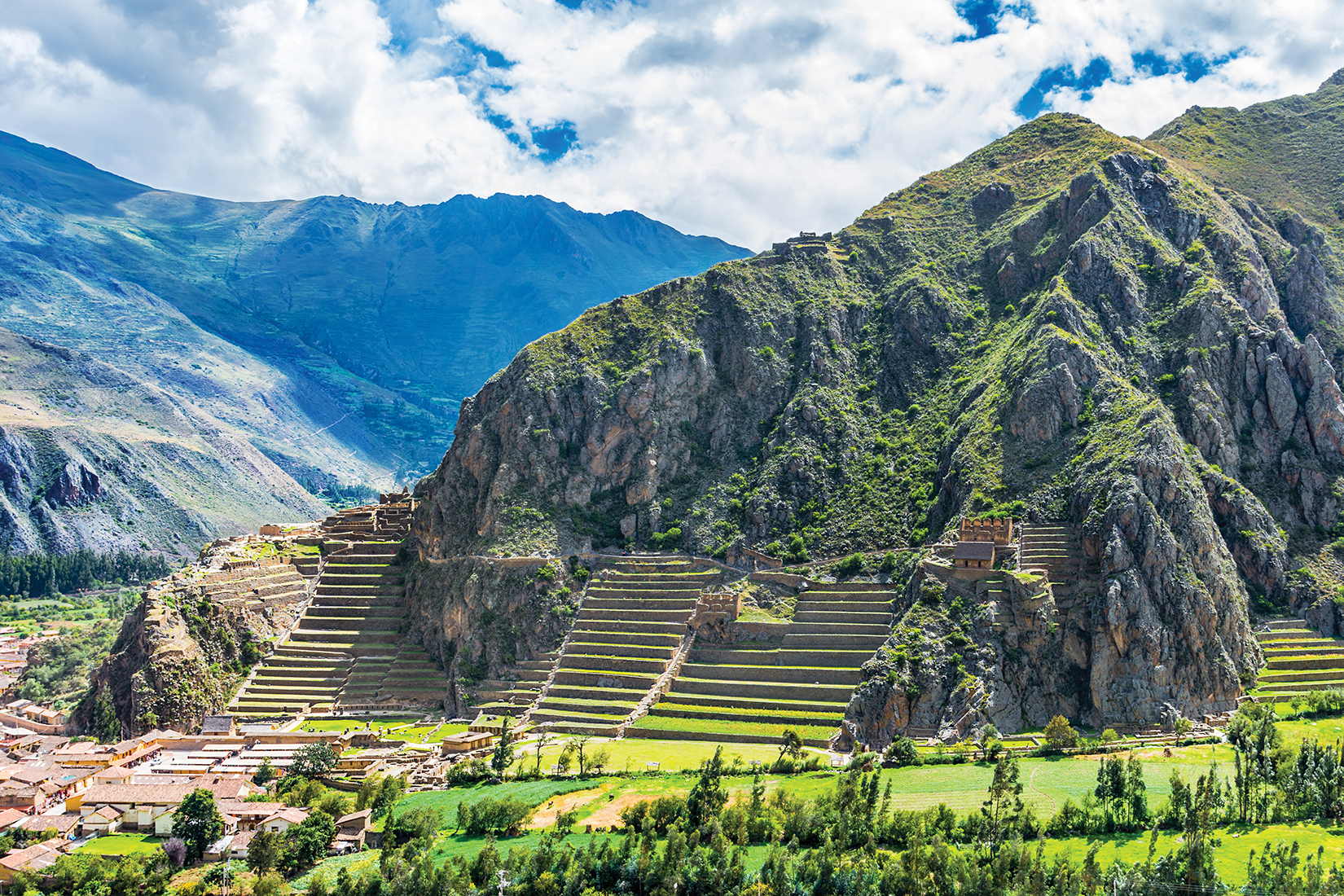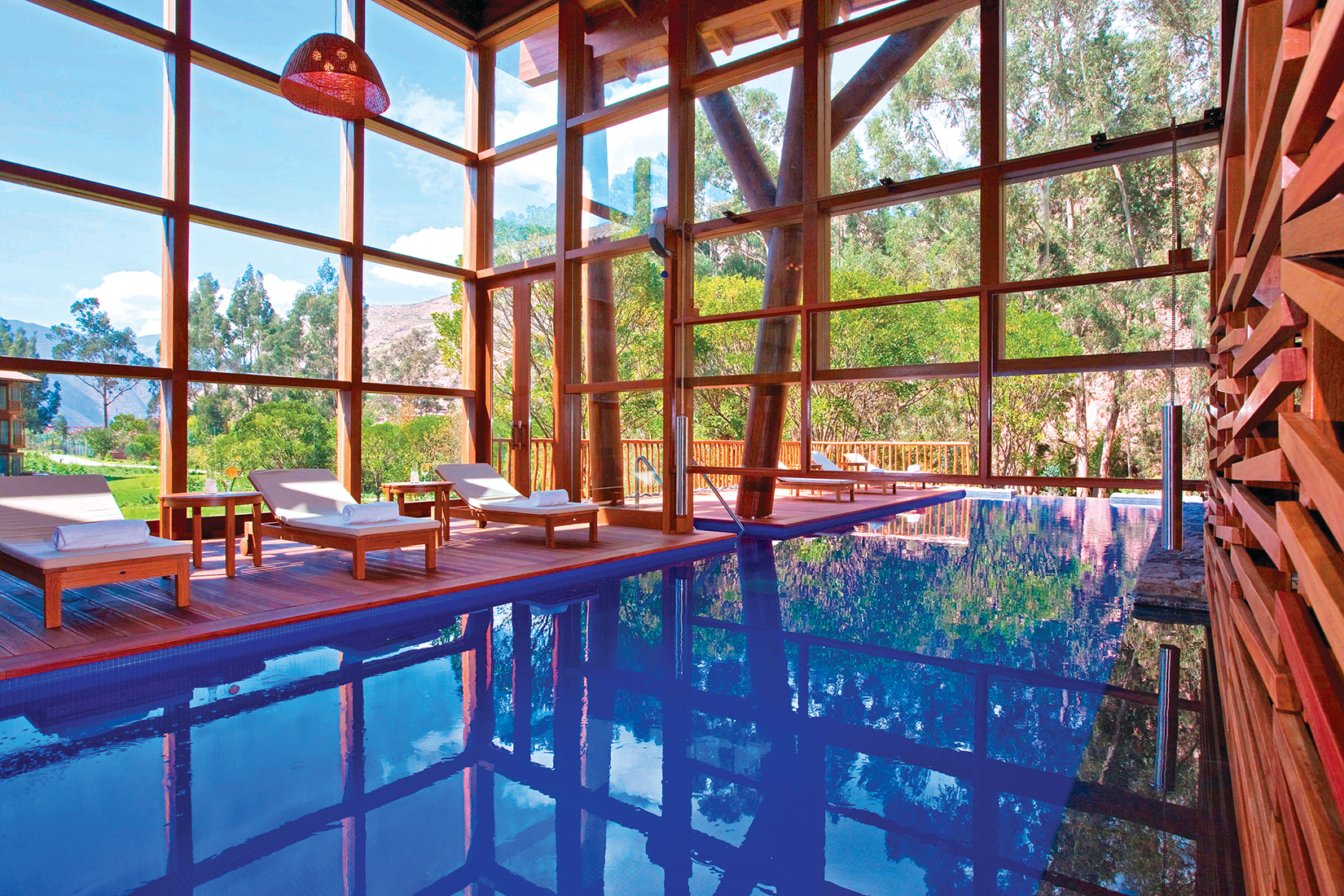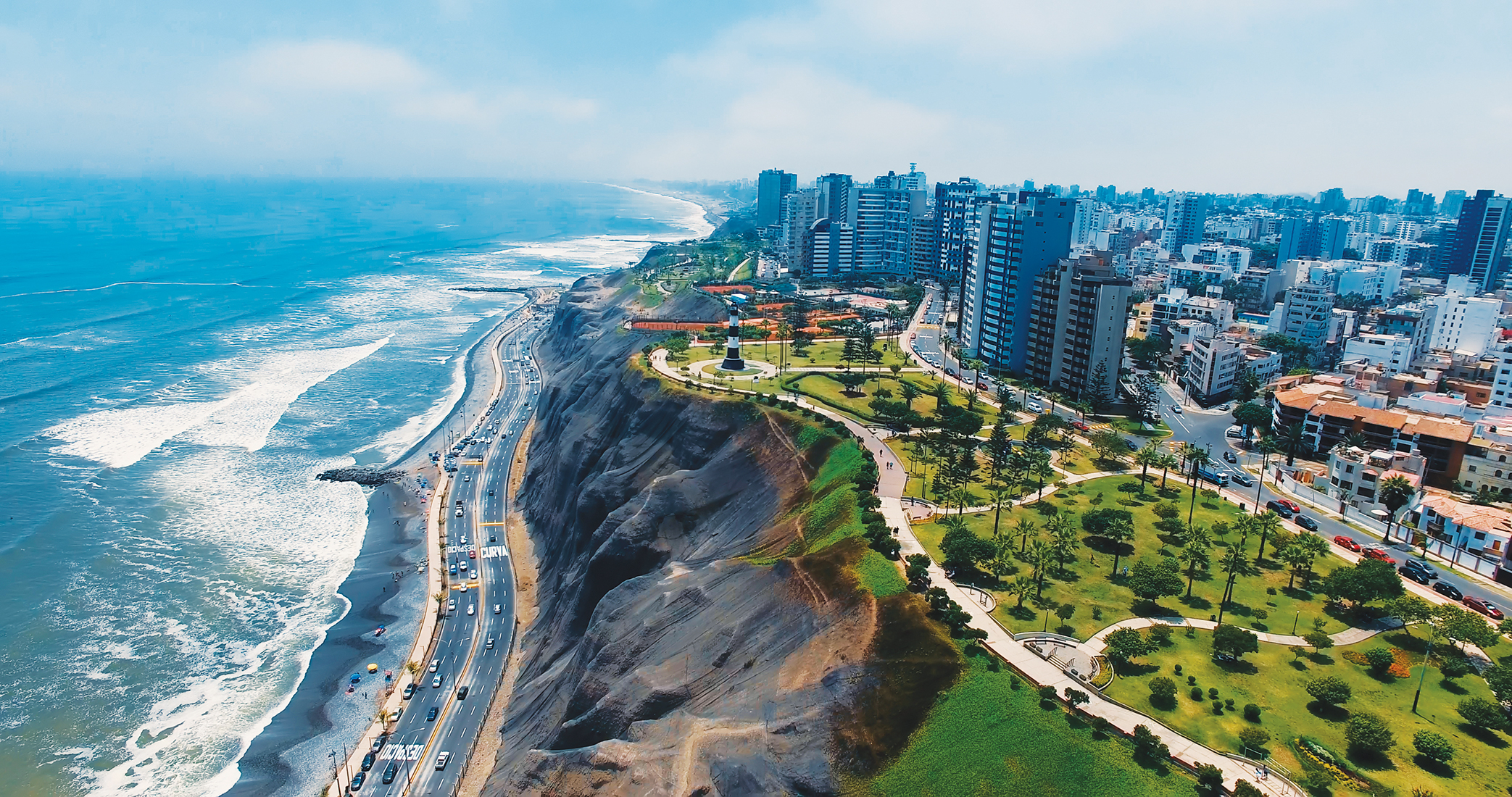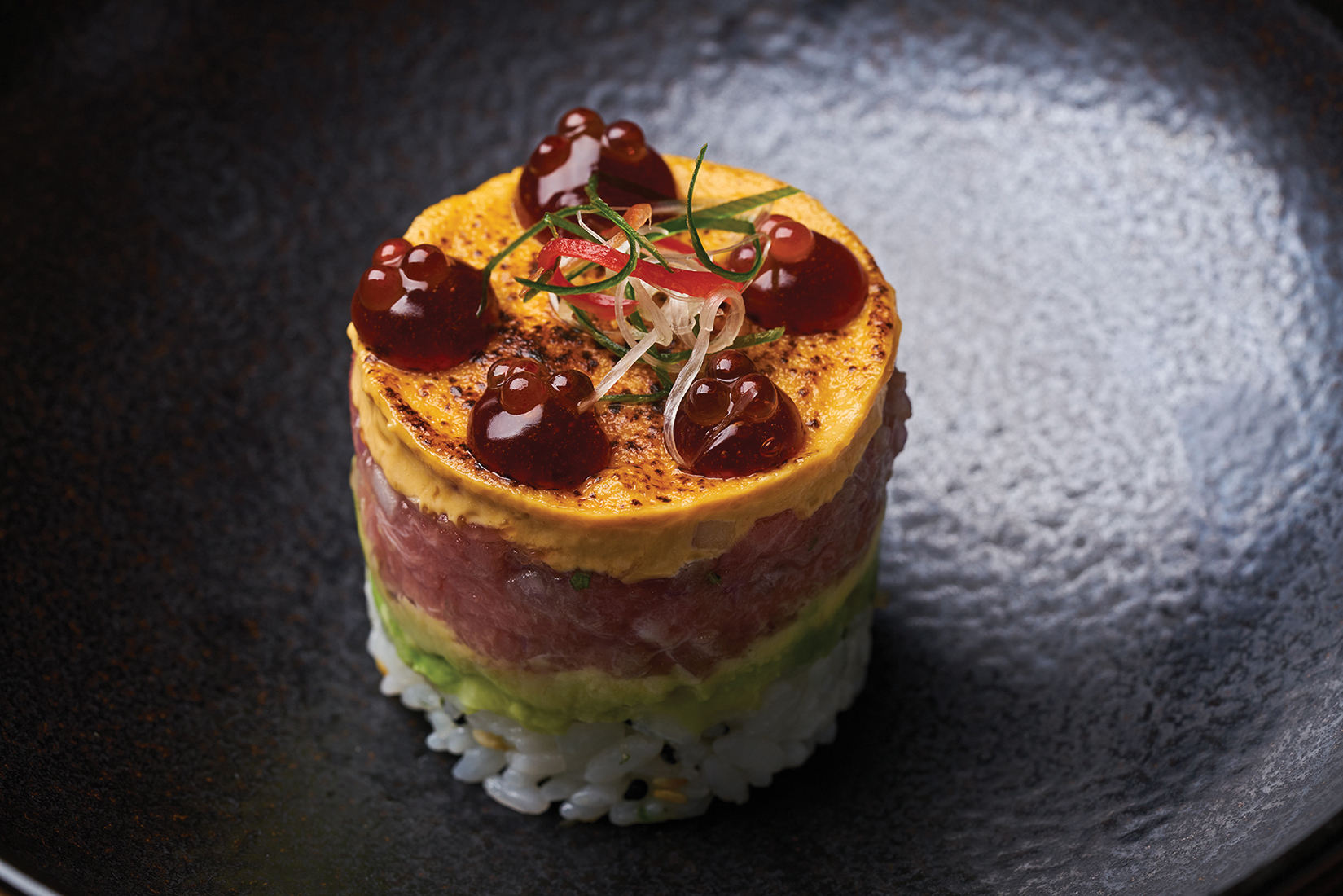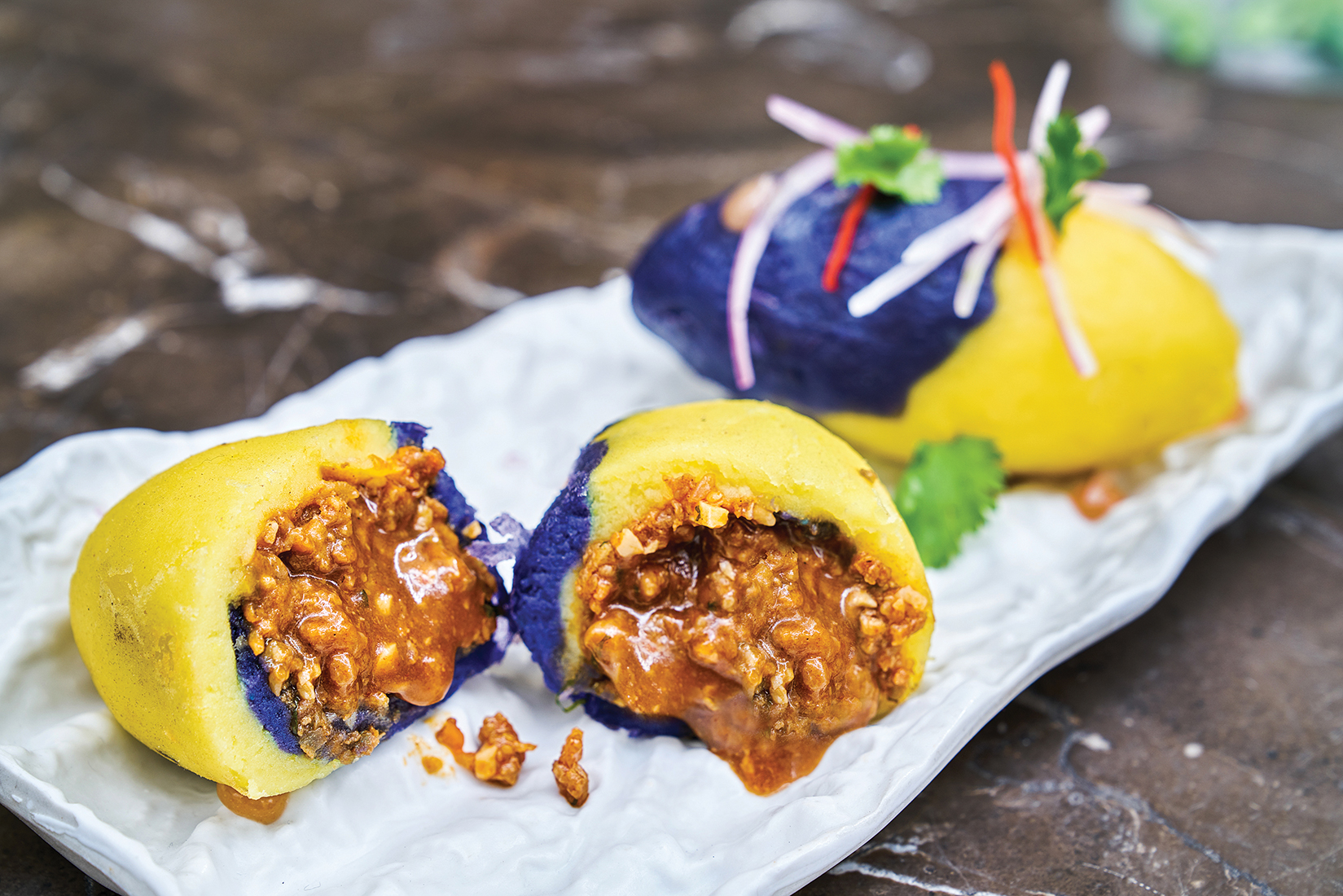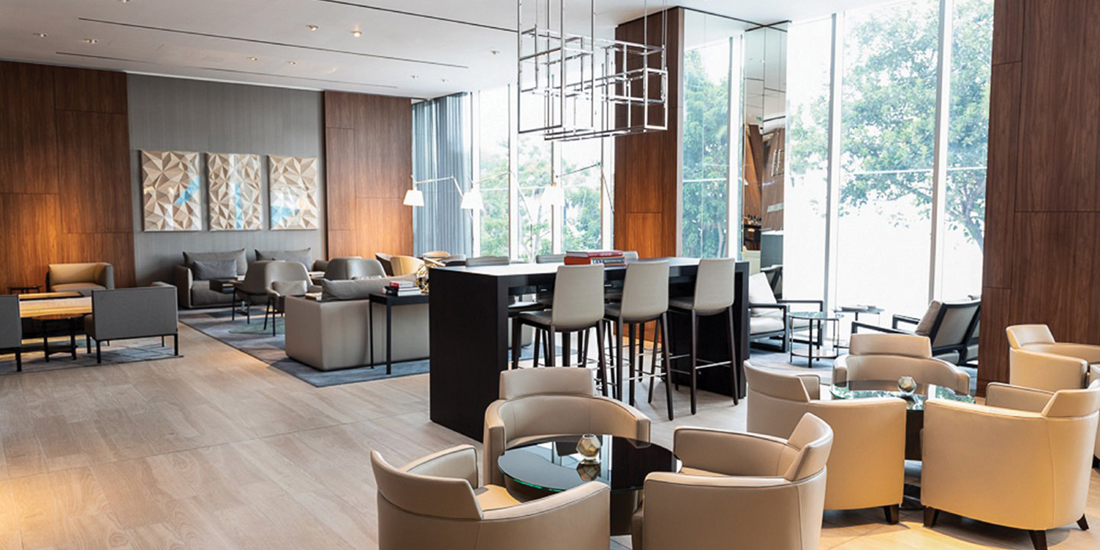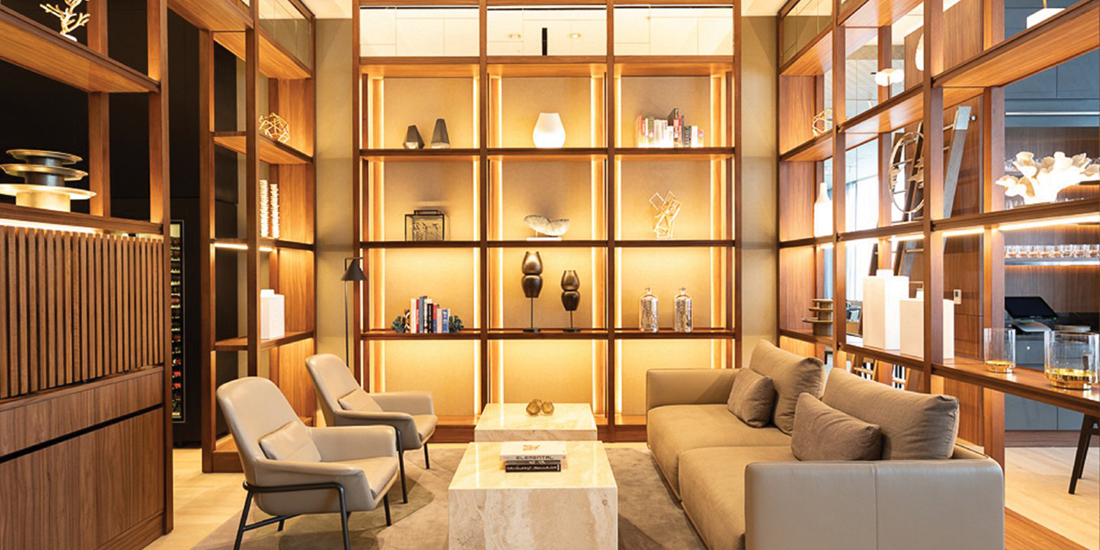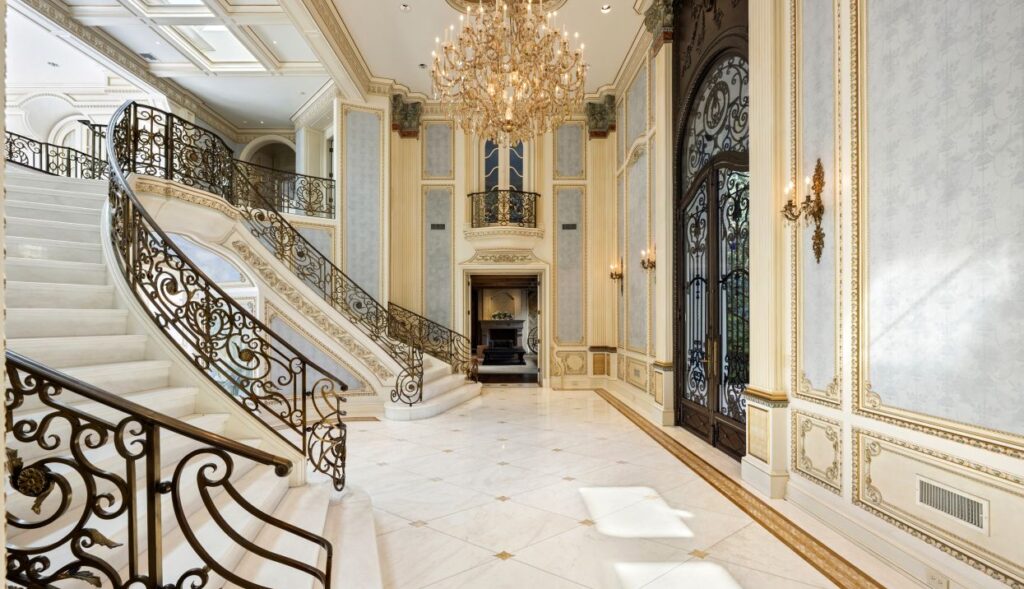— Climb the Andes Mountains and travel back in time to the Inca civilization, experience some of the world’s best restaurants, and end your days in chic five-star hotels. Peru is modernizing while retaining its magnetic authenticity and culture. Bear witness as we take you through the ancient city of Cusco and the flourishing capital of Lima—guided by the country’s tourism commission, PromPerú.
Machu Picchu is considered one of the Seven Wonders of the World. Nestled high near the peaks of the Andes Mountains in Peru, these ruins are some of the oldest and last remaining evidence of native life in Latin America. Machu Picchu was designated a UNESCO World Heritage site in 1983. Although many travelers fly thousands of miles to catch a glimpse of these magnificent ruins, there are many other reasons to explore Peru. Lima is one of the largest cities to be built in a desert, after Cairo. On top of having thousands of years of history, Lima is also home to some of the best fine dining restaurants in the world. Its booming food culture began around the 1980s in the midst of a violent civil war. From their bustling meat and produce markets to their local street food and interpretations of typical Peruvian dishes, there’s plenty to indulge in for your next holiday abroad.
Prior to embarking on the journey of a lifetime there are some important tips to note when visiting cities in high altitudes such as Cusco, Machu Picchu, and Ollataytambo. Once you’ve arrived your body needs time to acclimate to the lack of oxygen, make sure to rest on your first day and drink plenty of water. There are a number of remedies available to avoid altitude sickness such as chewing on coca leaves or drinking coca tea. You can also buy Acetazolamide (Diamox), that can help soothe symptoms such as nausea, dizziness, fatigue, headaches, etc. The best option, however, is to avoid stress, alcohol, and strenuous activity.
Cusco
Cusco has been inhabited for over 3,000 years and the area was the home of the Killke people until about 1,000 years before the arrival of the Incas. After the Incan Empire took over around the mid-13th century, Cusco became their historic capital and cities across the empire were replicated after it. Throughout the early 1500s, the Incas were involved in number of battles and civil wars. In 1533, when Spanish explorer Francisco Pizzaro arrived in Cusco, he captured and murdered Incan General Atahualpa and took over the region. Upon their arrival, the Spaniards were impressed by the stones used to build temples and small dams in the city as well as the symmetry of the streets. Qurikancha, the most elaborate Incan temple in the city, was dedicated to the sun god Inti. It was filled with solid gold replicas of life-sized lamas and corn, precious stones and tons of silver. After the Spanish plundered the temple, they destroyed it and used its foundations for the structure that replaced it—the Convent of St. Dominic (the tallest structure in the city today).
What to Do in Cusco
There are a number of things to do in Cusco. Learn more about Incan history at the Inca Museum that is run by the local university or check out the Planetarium that offers sweeping views of the entire city. Cusco also has a bustling nightlife, after you have adjusted to the altitude (or recovered from it) there are a number of bars, clubs, and restaurants around the Plaza de Armas that allows you to mingle with other visitors and locals alike. For the more adventurous foodies, make sure to try some cuy or guinea pig as it is a local delicacy.
Ollantaytambo is a neighboring town that sits directly between Machu Picchu and Cusco. Known as the launch point for the Inca Walk, a four-day hike to Machu Picchu, it is also the town where emperor Pachacuti built his palace, the homes for Inca nobility and terraces along the mountains that were used for farming. Ollantaytambo was also a stronghold for native resistance during their battles with the Spanish.
Many of the buildings that stand and the remains that are preserved date back to the mid-15th century. Temple Hill, commonly mislabeled as the Fortress, was built for religious purposes and never completed—the reason for which is still debated among historians. The terraces that line the town are the tallest ones built by the Incas for the purpose of farming. The altitude and variation in temperatures allowed the farmers to plant crops at the top that would not have survived being planted at the bottom and vice versa. All of the stones used to build these structures were cut-and-fitted rather than built with fieldstones which was more common. This indicates that the area was specially built for nobility and/or the emperor himself. There’s a number of ruins to see in Ollantaytambo, and for the more adventurous travelers, there are a few trails visitors are able to hike that don’t require as much commitment as the Inca Walk.
Where to Stay in Cusco
Tambo del Inka
Exploring the ancient history that is scattered along the Andes is an exhausting mission. In order to climb ruins and spend days walking, a good night’s rest must be had. Conveniently located in Urubamba, between Machu Picchu and Cusco, is Tambo del Inka. The Marriott-owned hotel offers five-star luxury amenities for guests looking for adventure and relaxation. Boasting a spa that offers a wide variety of services, an on-site restaurant and lounge, and an indoor/outdoor pool, this hotel leaves little to be desired. Their selling point, however, is the private train station that is located on the hotel premises. The Belmond Hiram Bingham, named after the American explorer who re-discovered Machu Picchu in the early 1900s, features a panoramic glass enclosed roof and top cuisine restaurant on board for the two to three-hour ride to Machu Picchu. Guests are able to select their seats before the general public. A swanky way to visit one of the worlds wonders? We approve.
Although hikers need special permits to hike the Inca Walk and Huayna Picchu Trail, hiking from the sun gate (Intipunku) to the city of Machu Picchu does not require any permits. Since the gate is named after the sun god, it makes sense that it lays on the southeastern ridge of the city and the sun passes through the gate every year during the summer solstice. The moderate hike from the gate to the city takes about three to four hours. Visitors must have their passports and tickets with them if they wish to exit and re-enter. Only small bags are allowed at the site and it is highly recommended that visitors carry plenty of water and a poncho as umbrellas are not allowed and the weather can be unpredictable. All that’s left to do once you’ve entered the ruins is gaze at the imposing city that’s been treasured for thousands of years, admire the wild wandering alpacas, and take all the pictures your heart desires.
Lima
Most travelers who visit Cusco start in Peru’s thriving capital, Lima. The city has just as much history as its more famous counterparts in the Andes and an even wider variety of food, transportation, and culture. Civilizations in Lima date back 2,000 years before the Spanish arrival. In 1535, two years after Pizzarro colonized Cusco, he and his fleet of Spanish soldiers declared Lima a new capital city due to its proximity to the ocean and ease of facilitating communication to Europe. The city was growing rapidly until an earthquake devastated the then up-and-coming city in 1746. Lima struggled to grow in population from the 1600s to the 1800s.
Finally, after about 10 years of battles against the Spanish and some assistance from the famed military and political leader, Simón Bolívar, Peru declared independence in 1821. From the mid-1800s to the early 20th century Japanese and Chinese migrants replaced African slave labor. Fast forward to the Peruvian Civil War in the 1980s, ending in 2003, this turbulent time caused natives and locals from surrounding towns to leave their homes and the population in Lima skyrocketed. Between the years 1970 and 2000, the population nearly doubled from approximately 13 million to 26 million residents.
From the ashes of Spanish liberation and the Peruvian Civil War rose the food culture Lima is known for today. The city is booming in many industries like marketing and tech but its biggest industry is culinary. With over 80,000 students currently in culinary school, the future of food culture in Lima will not be slowing down anytime soon. Truly a melting pot, Lima’s cuisine is heavily influenced by Asian, Native, and European culture.
What to Do in Lima
Five-star restaurant, Maido, offers a wide selection of Japanese-Peruvian fusion dishes with an emphasis on seafood; and was voted number nine on the list of the World’s Best Restaurants. Chef Mitsuharu Tsumura was born in Lima and returned to Japan during his culinary training to learn more about his Japanese culture. He moved back to Peru and is always working with his team to create new dishes that harmonize both Peruvian and Japanese cuisine. Specialties at Maido include sea urchin rice and legendary dishes like 50-hour cooked short rib and liquid nitrogen ceviche. However, the most thoughtful dish seems to be the Pulpo al Olivo or octopus with olive sauce. Historically, Peruvian fishermen threw away octopus as it was not part of the local cuisine. Noticing this, Japanese migrants grabbed the octopus when they saw they were not desired. Chef Tsumura’s Pulpo al Olivo is exemplary of his ability to blend a locally sourced ingredient to a culture that, for so long, did not acknowledge its utility or know how to use it. It’s important to point out that all of the dishes served at Maido are locally sourced from Peru.
Astrid y Gastón is both a culinary and architectural landmark in Lima. Known for its focus on elevating local Peruvian cuisine, the mastermind behind the food is Gastón Acurio. Known in the culinary community as one of the most significant contributors to the modernization of Pervuian dishes, Gastón and his wife Astrid Gutsche opened their restaurant in one of the oldest buildings in Lima. From its beginnings as a hacienda (former plantation house) to its preservation and modern-day use as a five-star restaurant, the building itself represents Lima’s transformation from a small rural town to one of the world’s food capitals. The menu offers a variety of Peruvian delicacies with modern twists such as peking guinea pig, a variation of peking duck, asado de tira or stewed beef ribs, and their corvina ceviche. Their tasting menu option allows you to try a little bit of everything and comes with a wine pairing. All ingredients used in the dishes are locally sourced in Peru.
Apart from the prestigious cuisine there are many places to get a great lunch or fresh fruit. Mercado de Surquillo is one of those places, it is one of the biggest markets in Lima and is a perfect place to brush shoulders with locals. Many small restaurants nearby offer lunch specials on fresh meat and fish meals, in other words, it’s a foodie’s heaven. There are many different kinds of dishes to indulge in, one in particular being anticuchos, or beef hearts. Many dishes that are typical in Lima today date back to slavery, utilizing cuts of meat that masters didn’t want to eat. After the mass migration in the 1980s, many of those dishes were brought to Lima and became a part of the DNA of the city’s food culture.
Where to Stay in Lima
AC Hotel Miraflores
Lima is a coastal city and no visit is complete without a trip to the ocean. AC Hotel Miraflores Lima is right next to Playa Redondo and 75 of their rooms offer sweeping views of the sea. It is the only hotel in the city that offers a rooftop bar and restaurant overlooking the ocean. Conveniently located right next to Larcomar shopping center, guests can walk over for a day of shopping, soaking up some sun, and grabbing cocktails. Decked out with modern finishes, clean simplicity and 24-hour room service, you won’t need to worry about a thing.
Words are not enough to describe the wonders found in Peru. With so much history to learn, people to meet, and food to eat it is no wonder why it’s a hotspot for international travelers. The country has been in constant flux since the 16th century and as it continues to globalize, it manages to retain its authenticity. Although Cusco and Lima are not the only treasures Peru has to offer, it is an extraordinary way to begin exploring the beauty of South America.

